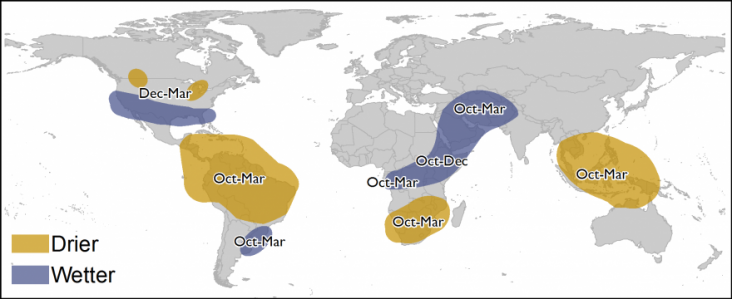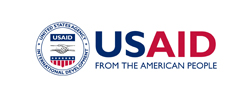This Article was recently published on the USAID website concerning the impact of the current El Niño event that is taking place. For more information concerning the El Niño and USAID's response, please visit their website
AFRICA: EL NIÑO PREPARATION AND RESPONSE
The current El Niño event is one of the strongest in recorded history. Droughts, floods, and other extreme weather are driving families from their homes, hurting people’s ability to earn an income, triggering food shortages, and threatening health and nutrition. USAID’s Famine Early Warning Systems Network estimates approximately 17 million people worldwide will face crisis food insecurity due to El Niño’s impacts.
OUR WORK
For decades, the United States has supported efforts led by host governments to build resilient, democratic societies. USAID remains committed to working with partners from across sectors -- corporations, foundations, NGOs, and faith-based communities— to achieve this goal, and to help end extreme poverty. Strong partnerships and critical tools allow us to leverage our resources to build resilience and mitigate the impacts of El Niño.
BUILDING RESILIENCE
USAID is at the forefront of building resilience among the world’s poorest communities, who are most at risk during crises like El Niño. Its investments promote climate-smart crop and livestock production and improve access to financial services and livestock insurance. They also promote better management of resources to avoid conflict, and strengthen disaster risk and drought cycle management. Such efforts increase access to water, sanitation, and health services and advance nutritional best practices.
For 10 years, USAID has supported the Government of Ethiopia's Productive Safety Net Program (PNSP), which provides predictable food rations and cash transfers to chronically food insecure people in exchange for work on public projects, and has pushed 1.5 million people out of poverty. During the current drought, the program has expanded to cover 8 million people. These individuals have improved their nutrition, learned farming techniques to conserve resources, and established savings, which will help them, withstand the worst impacts of the current drought. Since 2013, USAID has helped over 200,000 PNSP beneficiaries increase their annual incomes by an average of $330, putting them on a pathway toward sustainable self-sufficiency and helping them graduate from the program.
USAID’s Partnership for Resilience and Economic Growth program, works with Kenya’s National Drought Management Authority, county governments, and implementing partners to coordinate resilience and economic growth activities in nine target counties. The program has aligned efforts to build on community-identified strengths and priorities, including increasing adaptability, reducing risk, and improving social and economic conditions to target causes of vulnerability. These investments, along with the Government of Kenya’s Ending Drought Emergencies initiative and El Niño Preparedness and Response Task Force, are helping Kenyans mitigate the impact of El Niño.
Since 2014, we have reached 444,000 people throughout southern Africa to build resilience by promoting conservation agriculture practices and improving food security monitoring and early warning mechanisms.
RESPONDING TO CRISIS
Careful tracking of data from early-warning and weather systems on the progression of El Niño allowed quick mobilization of humanitarian assistance to the most affected communities. According to USAID’s Famine Early Warning Systems Network, El Niño has contributed to the driest period on record for parts of the Horn of Africa, Southern Africa, and especially Northeastern Ethiopia.
USAID announced an additional $97 million in humanitarian assistance for Ethiopia on January 31,2016 bringing the total U.S. humanitarian assistance to the country to more than $532 million since the start of fiscal year 2015. The funding provided 176,000 metric tons of relief food assistance, building on earlier contributions for food, nutrition, water, sanitation and hygiene support. Since October 2015, we provided 447,000 metric tons of food to more than 4 million people in Ethiopia to meet increased needs.
We have injected emergency funds into development efforts in Ethiopia to provide fodder vouchers to 15,200 households to help them retain livestock—an important source of income and nutrition.
In Somalia, the humanitarian community, led by OCHA, developed a comprehensive El Niño Contingency Plan for an integrated and timely response to El Niño. With USAID’s support, humanitarian agencies prepositioned food and relief supplies in areas most at risk of flooding. The intensity and duration of the October-to-December rains were less severe than anticipated and the overall estimated number of El Niño flood-affected people is 145,000, including 42,000 temporarily displaced people, most of who have returned to their villages. The focus now is on the provision of humanitarian assistance and livelihood support to those populations whose livelihoods and homes were damaged or destroyed during the floods and to populations in drought-affected areas in northern Somalia. USAID is funding several partners to provide cash and in-kind food and nutrition assistance to more than 20,000 people affected by exacerbated drought conditions.
In Southern Africa, food scarcity may grow due to two consecutive poor harvests —USAID’s partners are leveraging FEWS NET information to track food availability and prices in markets, and are responding robustly to the hunger season in countries such as Malawi and Zimbabwe.
We continue to coordinate our response with other donors to manage and prevent the potentially devastating and destabilizing impacts of El Niño.



